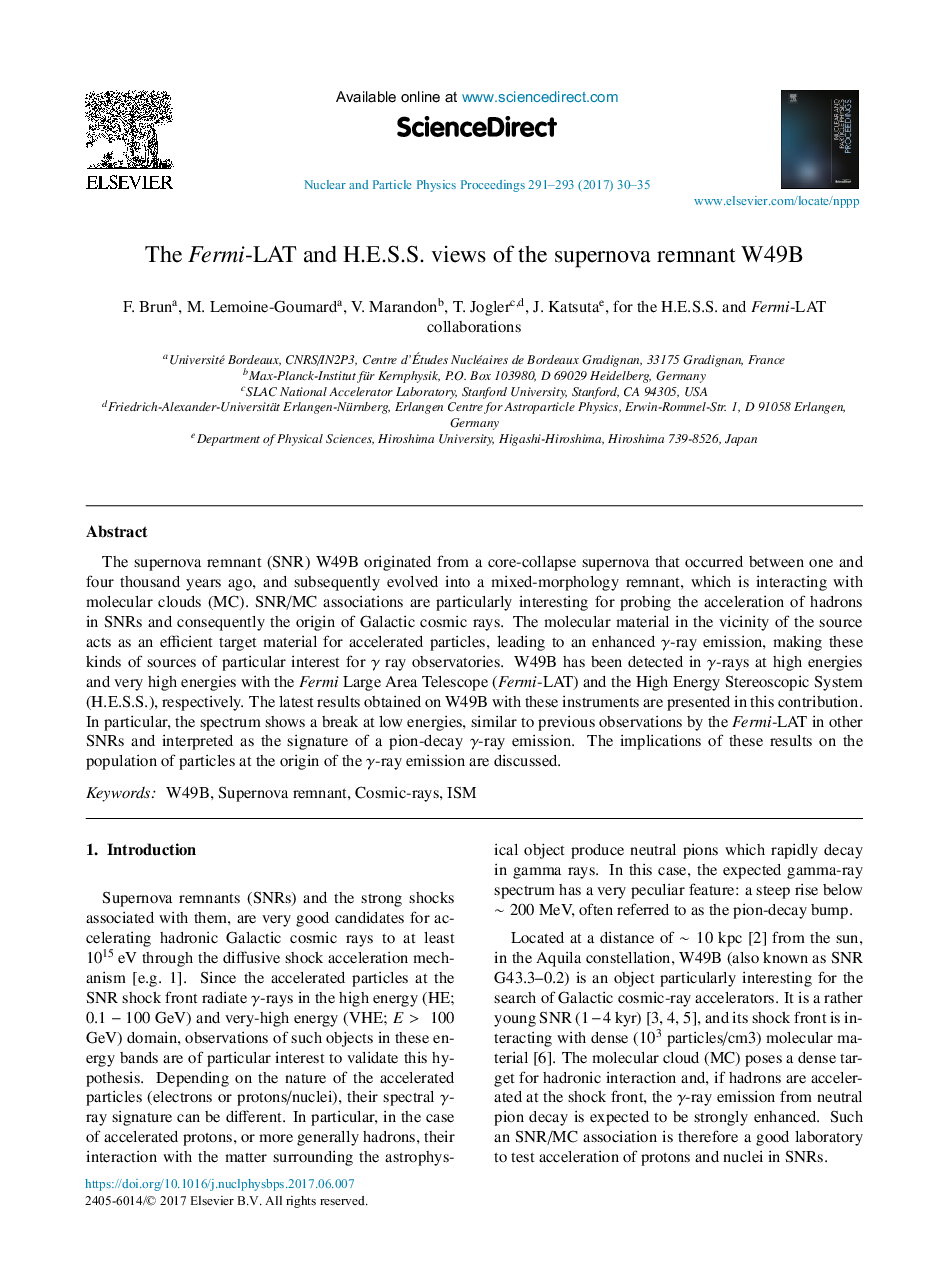| Article ID | Journal | Published Year | Pages | File Type |
|---|---|---|---|---|
| 8182386 | Nuclear and Particle Physics Proceedings | 2017 | 6 Pages |
Abstract
The supernova remnant (SNR) W49B originated from a core-collapse supernova that occurred between one and four thousand years ago, and subsequently evolved into a mixed-morphology remnant, which is interacting with molecular clouds (MC). SNR/MC associations are particularly interesting for probing the acceleration of hadrons in SNRs and consequently the origin of Galactic cosmic rays. The molecular material in the vicinity of the source acts as an efficient target material for accelerated particles, leading to an enhanced γ-ray emission, making these kinds of sources of particular interest for γ ray observatories. W49B has been detected in γ-rays at high energies and very high energies with the Fermi Large Area Telescope (Fermi-LAT) and the High Energy Stereoscopic System (H.E.S.S.), respectively. The latest results obtained on W49B with these instruments are presented in this contribution. In particular, the spectrum shows a break at low energies, similar to previous observations by the Fermi-LAT in other SNRs and interpreted as the signature of a pion-decay γ-ray emission. The implications of these results on the population of particles at the origin of the γ-ray emission are discussed.
Keywords
Related Topics
Physical Sciences and Engineering
Physics and Astronomy
Nuclear and High Energy Physics
Authors
F. Brun, M. Lemoine-Goumard, V. Marandon, T. Jogler, J. Katsuta, H.E.S.S. and Fermi-LAT collaborations H.E.S.S. and Fermi-LAT collaborations,
